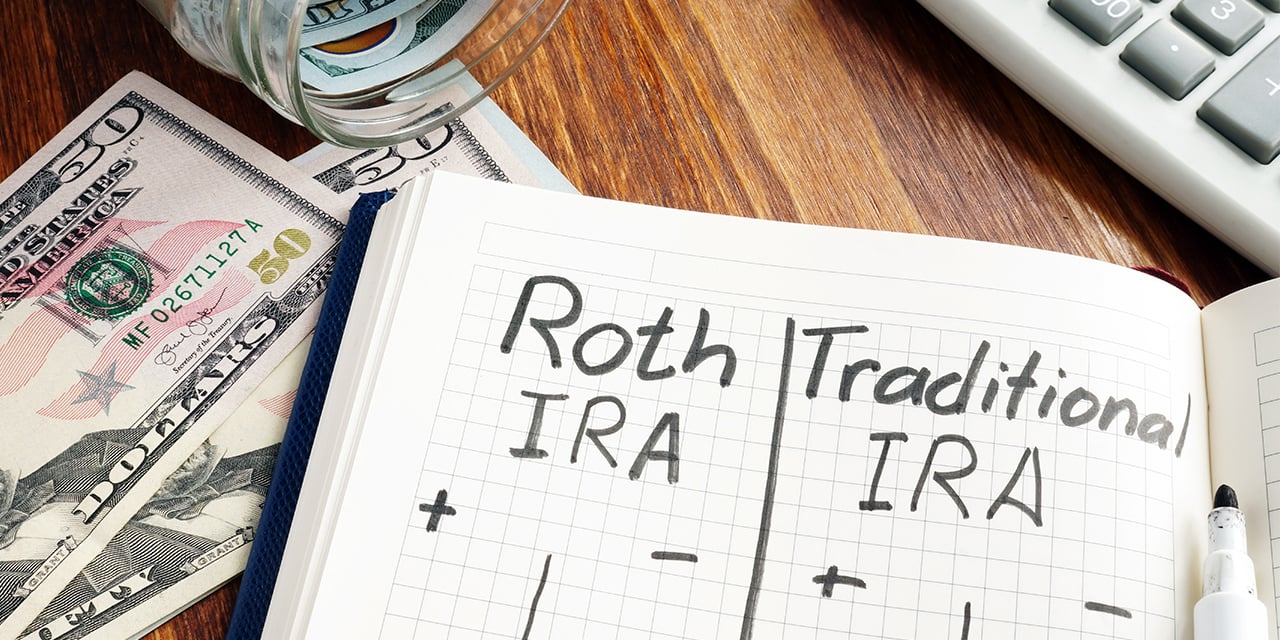
Traditional IRAs vs. Roth IRAs: What's the Difference?
Everything you need to know about IRA eligibility, tax treatment and withdrawal requirements. Plus: if converting to a Roth is right for you.
There are three main distinctions between a traditional IRA and a Roth IRA: eligibility, tax treatment and withdrawal requirements.
- Eligibility. With both types of IRAs, the owner must have earned income (or have a spouse with earned income) to be eligible to contribute. With a Roth IRA, there is also a total income threshold you must remain under to be eligible to contribute. Conversely, there are no such limits with a traditional IRA – someone at any income level can contribute. (Note: If your income makes you ineligible to open a Roth IRA, you still have the option of opening a traditional IRA and then converting it to a Roth – more on that below.)
- Tax Treatment. Contributions to a Roth IRA won’t provide any immediate tax benefit, as contributions are never tax deductible. However, if the owner meets some basic requirements, all withdrawals from a Roth IRA can be tax-free. Contrast that to a traditional IRA, where contributions can be tax deductible (for those who meet specific income requirements), and withdrawals from the account are typically fully taxable.
- Withdrawal Requirements. Both accounts generally allow for withdrawals of any amount once you reach age 59½, although as said above the tax treatment of withdrawals from the two accounts can be very different. Once the owner reaches age 73*, Traditional IRAs are subject to the Required Minimum Distribution rules, forcing money out of the account and triggering a tax cost. There are no RMD rules related to Roth IRAs, so owners (and even their surviving spouse) can leave the money to grow tax-free as long as they want.
In some cases, income restrictions will prevent individuals from contributing to a Roth IRA or deducting a traditional IRA contribution, but for everyone else they’ll have a choice to make: Forgo an immediate tax benefit in order to have tax-free income later in life by using the Roth IRA, or take an immediate tax deduction with the traditional IRA now knowing that future withdrawals will be taxable. In many cases, this comes down to the taxpayer’s current tax situation compared to where they’ll be in the future. See Table 1 for a more complete snapshot of the differences between the two accounts.
Features |
Traditional IRA |
Roth IRA |
| Tax Benefits | ||
| This year or in the future? | This year, generally | In the future |
| Contributions grow… | Tax-deferred | Tax-free |
| Contribution Rules | ||
| Funding source | Pre- or after-tax dollars | After-tax dollars only |
| Maximum annual contribution (for 2025) | $7,000 | $7,000 |
| Over-age-50 catch-up contribution | $1,000 | $1,000 |
| Eligibility | Anyone with earned compensation (or a spouse who has earned compensation) | Income up to $246,000 for married taxpayers ($165,000 for single taxpayers) |
| Age restrictions? | No | No |
| Withdrawals | ||
| Penalty-free? | Yes, after age 59½ | It varies, but often yes. Contact your Baird Financial Advisor for information on your specific situation. |
| Taxability | Taxed as ordinary income | Tax-free, as long as you meet specific requirements |
| Required minimum distributions | Yes, starting at age 73 | No |
Table 1. Snapshot: Traditional IRA vs. Roth IRA. All data are for 2025.
Converting a Traditional IRA to a Roth IRA
For those who aren’t eligible to contribute to a Roth IRA, there is still a way to take advantage of the tax-free growth those accounts offer. The Roth conversion technique allows a taxpayer to withdraw funds from a traditional IRA in a taxable distribution, but then roll those funds into a Roth IRA, where all future growth can be tax-free. There are no income thresholds to be eligible for a conversion, but there are plenty of factors to consider before doing so.
One of the most common reasons to convert to a Roth is when your tax bracket in retirement will be higher than your current tax rate. For example, if you're just starting out in your career and expect your income to grow much higher, converting to a Roth now could be beneficial. It could also be advantageous if you just retired and have no earned compensation but also haven't had your retirement income kick in yet. Other reasons to consider a Roth conversion include:
- Additional flexibility in retirement. Because Roth IRAs allow you to withdraw funds without increasing your tax burden and are not subject to RMD rules, they are less restrictive and can give you additional financial choices – including the option of staying invested in the stock market for a longer period of time. They might also provide some tax planning benefits if your other retirement assets are taxed when withdrawn.
- Avoiding the IRMAA. If you are enrolled in Medicare Part B or D and your modified adjusted gross income is above a certain threshold, you pay a surcharge on top of your monthly premium. That Income-Related Monthly Adjustment Amount (IRMAA) could cost thousands of dollars per year, but a Roth conversion can help avoid that extra cost. While withdrawals from a traditional IRA are part of your MAGI, potentially triggering an IRMAA surcharge, withdrawals from a Roth IRA are not.
- A lower tax burden for your heirs. If you leave a traditional IRA to an heir, they only have 10 years to deplete it in most cases, meaning larger annual distributions that could move them to a higher tax bracket. By converting to a Roth, your heir would likely still have to deplete it in 10 years, but those distributions would be tax-free. Think of paying the tax on a Roth conversion as a gift to your heirs!
That said, converting a traditional IRA to a Roth IRA might not be right for everyone in every situation. For example, if you’re nearing retirement and using your traditional IRA distributions to pay for living expenses, you might not have time to recoup what you would pay in additional taxes with a conversion. A Roth conversion might also not be appropriate if you’re using a Qualified Charitable Distribution to meet your traditional IRA’s RMD requirements. The appropriateness of a Roth conversion, much like the decision to open a traditional or Roth IRA, will depend on your specific financial circumstances and goals.
Finally, there are two important factors to keep in mind if you decide to make the conversion: (1) you must pay income taxes on any pre-tax funds you convert in the year of the conversion, and (2) you can’t change your mind once you convert.
While Baird does not offer tax or legal advice, our Financial Advisors regularly work with clients’ attorneys and tax professionals to help ensure that all aspects of your wealth plan are addressed, and they are well-equipped to help you sort out which strategies are right for you.
*The RMD age is 75 for those born in 1960 or later.
Editor’s Note: This article was originally published December 2020 and was updated March 2025 with more current information.
The information offered is provided to you for informational purposes only. Robert W. Baird & Co. Incorporated is not a legal or tax services provider and you are strongly encouraged to seek the advice of the appropriate professional advisors before taking any action. The information reflected on this page are Baird expert opinions today and are subject to change. The information provided here has not taken into consideration the investment goals or needs of any specific investor and investors should not make any investment decisions based solely on this information. Past performance is not a guarantee of future results. All investments have some level of risk, and investors have different time horizons, goals and risk tolerances, so speak to your Baird Financial Advisor before taking action.


